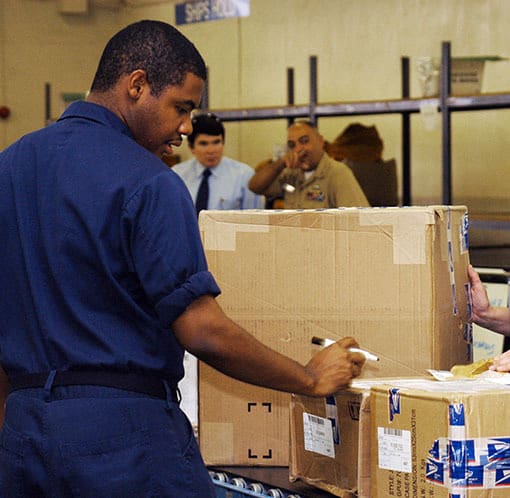Manage Incoming & Outgoing Shipments
Many retail distribution companies have large warehouse operations that send and receive postal shipments every single day. In order to maintain successful operation, these organizations require shipping and receiving workers that understand warehouse operations. Companies (in no small degree) rely on these workers to facilitate deliveries both to a company’s vendors and customers.
Typically, some of the common shipping/receiving workers include:
Shipping and receiving supervisor
Shipping clerk
Shipping coordinator

Shipping and Receiving Job Description
Typically, the primary duties and responsibilities of a shipping and receiving worker include:
Making pickups and deliveries for various items
Identifying discrepancies in price and quantity upon receipt of shipments from suppliers
Follow prescribed safety regulations in maintaining work area and equipment in a clean, orderly condition
Report questionable conditions such as defective materials to the supervisors
Perform computer functions necessary to track various aspects of goods
Maintain inventory of shipping materials and supplies
Receive items and process all defective parts returned for replacement or credit
Operate the stretch wrap banders
Operate PB crimp tools, including processing, diagnosis, and repair
Operate hand or lift trucks to hoist, move or convey materials to proper areas or departments.
Education and Training
Shipping/receiving tasks are typically require on-the-job training. Experienced workers are responsible for getting new hires up to speed. Nevertheless, most manufacturers and distribution centers demand applicants to have a high school diploma or equivalent at entry level. A certification in shipping/receiving is a plus.
Familiarity with warehouse management systems is also highly considered. In most cases, employers prefer candidates with insightful knowledge relating to business equipment, computers and other electronic gadgets used in a warehouse. Having a few years of work experience gives you better job opportunities.
Physical Demands and Interpersonal Skills
Shipping and receiving jobs are very active where individuals must frequently lift and move items weighing 50 pounds or more. At times the employee will have to climb, crawl, crouch, stoop, kneel, bend, walk, or stand all day. These activities are physically demanding and require individuals to hear, communicate, and see appropriately at all times.
Specific vision requirements demanded on the job include the ability to adjust focus, close vision, distance vision, peripheral vision and depth perception. Besides physical attributes, employees have high regard for a qualified applicant with keen attention to details, practical communication skills (both verbal and written), and team player qualities with impeccable character.

Work Schedules and Salary
Most shipping and receiving jobs are full time. Because materials are shipped and received around the clock, workers have overnight shifts. In many instances, a shift is 8 hours, but sometimes overtime is available.
Like most other warehouse workers, a shipping and receiving clerk, for example, takes home an average pay of $14.44 per hour. This amount can increase to a minimum of $16.40 during overtime, according to 2018 Payscale.com statistics.
However, wages vary based on state, industry, and experience on the job.
Common Potential Risks Involved
Shipping/receiving workers, like other warehouse workers, have one of the highest rates of illnesses and injuries. Sometimes, you’re required to bend while lifting items or move heavy objects. These and other activities can lead to injuries such as overexertion, strains, or sprains. Working in warehouses or outside can also subject you to adverse weather conditions.
Despite the risks, Shipping, Receiving and other warehouse jobs can be greatly rewarding for many people.
If any of these job titles sound like the right fit for you, fill out our quick online application. Performance Personnel is here to help!




